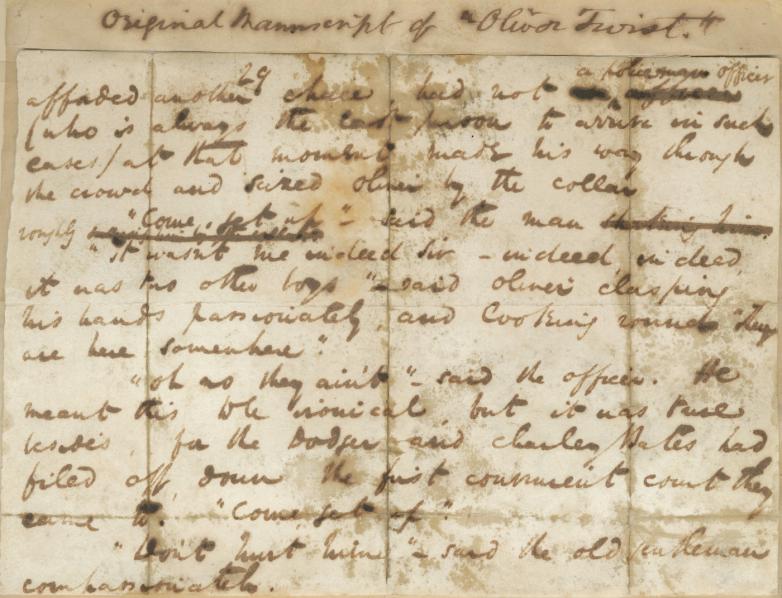Real Life Dickens Characters and Locations Revealed

A page from Charles Dickens' Oliver Twist manuscript.
Charles Dickens turns 200 next week and commemorative exhibitions are already in full swing across the globe. (Check out the Morgan Library, here in the States, or Dickens 2012 for a variety of events in Britain). But a particularly interesting bit of news came out yesterday when the Guardian reported that a Cambridge scholar and skilled researcher, Ruth Richardson, had uncovered the real-life inspirations for several classic Dickens characters.
It began when Richardson discovered a four-story workhouse from the 1770s in Cleveland Street, London, which was likely the inspiration for the notorious workhouse in Oliver Twist. (Read more about that story from the Telegraph). Richardson then stumbled across a peculiar fact previously missed by Dickens researchers: Cleveland Street was formerly known as Norfolk Street. Biographers had long known that Dickens lived in an apartment above a corner shop at 10 Norfolk Street, but they assumed the building had disappeared ages ago. Richardson re-discovered the building, now at the address 22 Cleveland Street. Thus Dickens lived a scant nine doors away from the infamous workhouse.
Richardson then delved deeper into the life and times of the Cleveland Street neighborhood in Dickens' day, revealing several more surprises:
- A "William Sykes" sold tallow and wax at 11 Cleveland Street. (Possible inspiration for Bill Sikes in Oliver Twist)
- A "Mr. Sowerby" owned a nearby pub. (Possible inspiration for the undertaker Sowerberry in Oliver Twist)
- A "Dan Weller" cobbled shoes across the street from Dickens' flat. (Possible inspiration for Sam Weller in the Pickwick Papers)
- A "Mrs. Corney" sold and repaired gloves nearby and a "Mrs. Malie," the wife of a local doctor, also lived on the same street. (Possible inspiration for Mrs Corney and Mrs. Maylie respectively in Oliver Twist).
- A dancing master was a fellow lodger in Dickens' building. (Possible inspiration for the dancing master in Sketches by Boz).
- A pawnbroker shop was located just up the street. (The plot of Oliver Twist hinges upon a locket pawned from Oliver's dead mother).
- Two tradesmen operated a nearby shop under the name of their partnership, "Goodge and Marney." (Possible inspiration for "Scrooge and Marley" in the Christmas Carol).
And so the Dickensian Norfolk neighborhood springs to life, thanks to Richardson's stellar research. Perhaps these little London lives lived in obscurity have found a lasting immortality in the work of Dickens.















